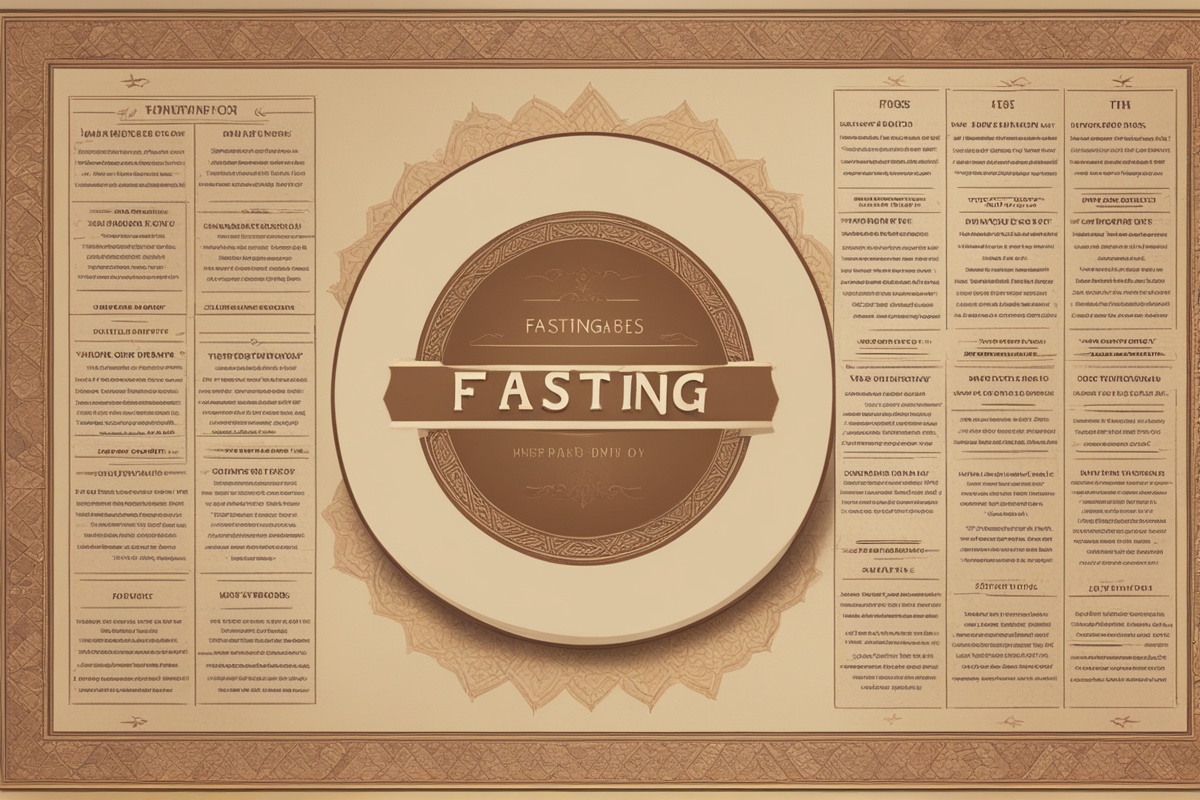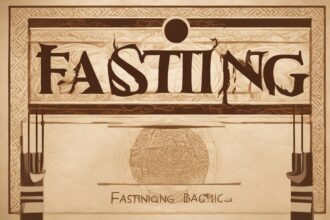Have you ever wondered why fasting, a practice as old as humanity itself, is making such a comeback in today’s wellness world? From ancient spiritual rituals to modern health fasting trends, this age-old tradition has woven its way through cultures, religions, and even science labs. Whether you’re curious about intermittent fasting for weight loss or intrigued by its potential mental clarity benefits, understanding the history of fasting offers a fascinating lens into why it remains relevant. In this deep dive, we’ll explore how fasting evolved over centuries, its cultural significance, and the science that supports its role in health and longevity. Let’s journey through time to uncover the roots of fasting and how you can apply its principles to your life today.
The Ancient Origins of Fasting: A Spiritual and Survival Tool
Fasting isn’t a new fad; it’s a practice that dates back to prehistoric times. Early humans didn’t have the luxury of three square meals a day. Food scarcity meant periods of involuntary fasting were a norm, shaping our bodies to adapt to cycles of feast and famine. Beyond survival, fasting emerged as a spiritual tool in ancient civilizations. In Ancient Egypt, fasting was tied to purification rituals before important ceremonies, believed to cleanse both body and soul. Similarly, in Ancient Greece, philosophers like Hippocrates, often called the “Father of Medicine,” advocated for fasting as a remedy for illness, famously stating that “to eat when you are sick is to feed your sickness” (Hippocrates, circa 400 BCE). This early recognition of fasting’s therapeutic potential laid the groundwork for its role in health fasting practices we see today.
Religious Fasting: A Pillar Across Faiths
Fast forward to organized religions, and fasting became a cornerstone of spiritual discipline. In Christianity, fasting during Lent—a 40-day period of reflection before Easter—mirrors Jesus’ fast in the desert. Islam’s holy month of Ramadan requires Muslims to fast from dawn to sunset, fostering self-control and empathy for the less fortunate. Judaism observes fasting on Yom Kippur, the Day of Atonement, as a means of repentance. Meanwhile, in Hinduism and Buddhism, fasting is often tied to meditation and detachment from worldly desires. These practices weren’t just about spirituality; they inadvertently promoted fasting benefits like improved digestion and mental focus, even if the science wasn’t understood at the time. It’s incredible to think that what started as a sacred act thousands of years ago aligns with modern health fasting goals.
The Renaissance of Fasting in Medicine and Science
By the 19th and early 20th centuries, fasting caught the attention of medical professionals. Doctors began experimenting with therapeutic fasting to treat conditions like obesity, epilepsy, and even mental health disorders. One notable figure, Dr. Henry Tanner, fasted for 40 days in 1880 under medical supervision to prove its safety, sparking public intrigue. Fast forward to the 20th century, and research started to uncover why fasting might work. Studies showed that fasting could induce ketosis—a state where the body burns fat for fuel—offering potential benefits for brain health and seizure control in epilepsy patients (Wilder, 1921). Today, with advancements in science, we’re learning more about how fasting impacts cellular repair and longevity, making it a hot topic in fasting for wellness circles.
Modern Health Fasting: Intermittent Fasting and Beyond
Enter the 21st century, and fasting has transformed into a mainstream health strategy. Intermittent fasting (IF), which involves cycling between eating and fasting windows, has become a go-to for weight management and metabolic health. Research suggests IF can improve insulin sensitivity and reduce inflammation, key factors in preventing chronic diseases like diabetes (Patterson & Sears, 2017). Beyond IF, other forms like water fasting, juice fasting, and time-restricted eating have gained traction. What’s driving this resurgence? Social media, celebrity endorsements, and a growing body of evidence on fasting health benefits are making it accessible to everyone. But it’s not a one-size-fits-all solution—knowing your body and consulting a healthcare provider is key before diving into any fasting regimen.
Scientific Insights: Why Health Fasting Works
So, what does science say about health fasting? When you fast, your body undergoes fascinating changes at the cellular level. One key process is autophagy, where cells “clean house” by recycling damaged components. Studies indicate that autophagy, triggered by fasting, may protect against age-related diseases and even cancer (Rubinsztein et al., 2011). Fasting also lowers insulin levels, encouraging fat-burning, and boosts human growth hormone, which supports muscle maintenance (Ho et al., 1988). Additionally, fasting has been linked to improved brain function through the production of brain-derived neurotrophic factor (BDNF), a protein tied to learning and memory (Mattson et al., 2018). While more long-term human studies are needed, these findings highlight why fasting isn’t just a trend—it’s a potential powerhouse for health.
Practical Tips for Starting Your Fasting Journey
Ready to try health fasting for yourself? It can feel daunting at first, but with the right approach, it’s manageable and even rewarding. Here are some practical tips to ease into fasting while prioritizing safety and sustainability:
- Start Small: If you’re new, try a 12:12 intermittent fasting schedule—12 hours of fasting (including sleep) and a 12-hour eating window. Gradually move to 16:8 as you adjust.
- Stay Hydrated: Drink plenty of water during fasting periods to avoid dehydration, especially during longer fasts.
- Listen to Your Body: If you feel dizzy or overly fatigued, break your fast with a small, nutrient-dense meal. Fasting shouldn’t feel like punishment.
- Focus on Nutrition: When you do eat, prioritize whole foods—think lean proteins, healthy fats, and veggies—to support your body’s needs.
Remember, fasting isn’t about starvation; it’s about giving your body a break. And always consult a doctor if you have underlying health conditions or are pregnant.
Common Myths and Misconceptions About Fasting
Despite its growing popularity, fasting is often misunderstood. Let’s bust some myths to help you approach fasting for health with clarity:
- Myth: Fasting slows metabolism. Truth: Short-term fasting can actually boost metabolic rate by increasing norepinephrine levels (Zauner et al., 2000).
- Myth: You’ll lose muscle mass. Truth: Fasting preserves muscle by elevating growth hormone, especially if paired with resistance training (Ho et al., 1988).
- Myth: Fasting means no energy. Truth: Many report heightened focus during fasting due to stable blood sugar and ketone production.
Understanding these truths can help you embrace fasting without fear. It’s not about deprivation but about balance and intentionality.
As we’ve traveled through the history of fasting—from ancient survival tactics to spiritual rituals and modern health fasting science—it’s clear this practice is more than a passing trend. It’s a testament to human resilience and adaptability, offering benefits that span physical, mental, and emotional well-being. Whether you’re drawn to fasting for its health benefits, cultural roots, or simply curiosity, remember that it’s a personal journey. Start small, stay informed, and listen to your body. The wisdom of centuries backs this practice, and with a mindful approach, you can tap into its potential to enhance your life. So, why not give it a try and see how fasting fits into your wellness routine?
References
- Ho, K. Y., Veldhuis, J. D., Johnson, M. L., et al. (1988). Fasting enhances growth hormone secretion and amplifies the complex rhythms of growth hormone secretion in man. Journal of Clinical Investigation, 81(4), 968–975.
- Mattson, M. P., Moehl, K., Ghena, N., et al. (2018). Intermittent metabolic switching, neuroplasticity and brain health. Nature Reviews Neuroscience, 19(2), 63–80.
- Patterson, R. E., & Sears, D. D. (2017). Metabolic effects of intermittent fasting. Annual Review of Nutrition, 37, 371–393.
- Rubinsztein, D. C., Mariño, G., & Kroemer, G. (2011). Autophagy and aging. Cell, 146(5), 682–695.
- Wilder, R. M. (1921). The effects of ketonemia on the course of epilepsy. Mayo Clinic Proceedings, 2, 307–308.
- Zauner, C., Schneeweiss, B., Kranz, A., et al. (2000). Resting energy expenditure in short-term starvation is increased as a result of an increase in serum norepinephrine. American Journal of Clinical Nutrition, 71(6), 1511–1515.






